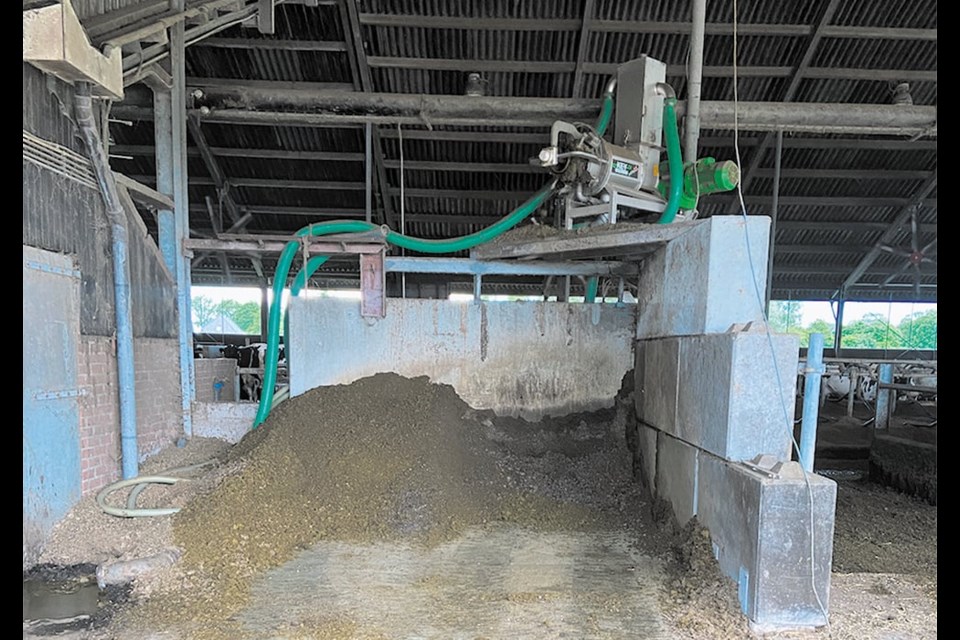WESTERN PRODUCER — A Dutch farmer is making liquid fertilizer from his manure so he can use the nutrients where they are produced instead of moving them around the country.
Ton Groot Roessink milks about 200 cows with robots, automated feeding and automated manure cleaning near Baak.
The manure from the farm is put through a biogas digester. The methane is burned in an engine to produce electricity and heat for the farm.
Those steps are standard for farms that use biogas digesters.
Groot Roessink is taking the process several steps further to make sure methane emissions are controlled and nutrients are added to crops in a form that they are most available.
He hopes his system can eventually be used across the Netherlands to manage manure.
Here’s how it works:
Manure is moved to the biogas digester. He’s building a receiving pit so that manure can be scraped each hour in the barn and moved quicker into the digester to reduce methane emissions.
The digestate from the digester is put through a screwpress, and the solids are used for bedding or by neighbours who want it for their gardens. The liquids are sent through another process.
The digester system produces lots of heat, including from the engine and that heat is collected in water that’s 80 or 90C. The water heats wash water and houses, but Groot Roes looked for other ways to use it.
He uses the heat to warm up the liquid with nutrients from the digestate in a system of tubes that run back and forth and help produce ammonia. The liquid manure enters the system at about 17C and exits at 60 to 70C. “We try to make a lot of ammonia and we do it in a closed system.”
The ammonia is moved across the yard to a treatment system where sulphuric acid and potassium nitrate (saltpetre) are added to the system. The solution is washed back through the system until it reaches eight per cent nitrogen.
The liquid fertilizer is then stored in a silo near by for use. It is either injected, applied with a sprayer dropping it on the leaves, or applied at the same time as the manure,depending on the nitrogen content.
A new system is being installed that Groot Roessink expects will not need additives like sulphuric acid and potassium nitrate to create the liquid fertilizer.
“It’s a good system to make a circular concept for your farm and to minimize the emissions,” he says. “We have the practical research for five years and it was a good system, but now we want to test more things.”
He has funding from government agencies to help pay for the research.
Groot Roessink worked as a consultant with farmers on manure management plans before he returned home to the farm. This gave him the background to work on the problem on his family’s farm, which he runs with his girlfriend and parents.
Producing electricity from manure made more sense to him than making electricity from solar panels, which is popular on farms in the Netherlands.
“We have a lot of shit, but in the Netherlands, shit is a big problem,” he says. “It has a lot of positives when you can separate it.”
The question might be why separate the nitrogen from manure and then apply it with manure, but it’s all about the rules says Groot Roessink, as he uses his hand to mimic being choked higher on his neck as a metaphor for increasing regulations.
By pulling the nitrogen out of the manure and bringing it back as a different product, it qualifies as a separate use of the nutrient.
Groot Roessink says he hopes his separation system can mean that nutrients aren’t trucked across the country and that it can benefit farmers in the Netherlands and around the world.




